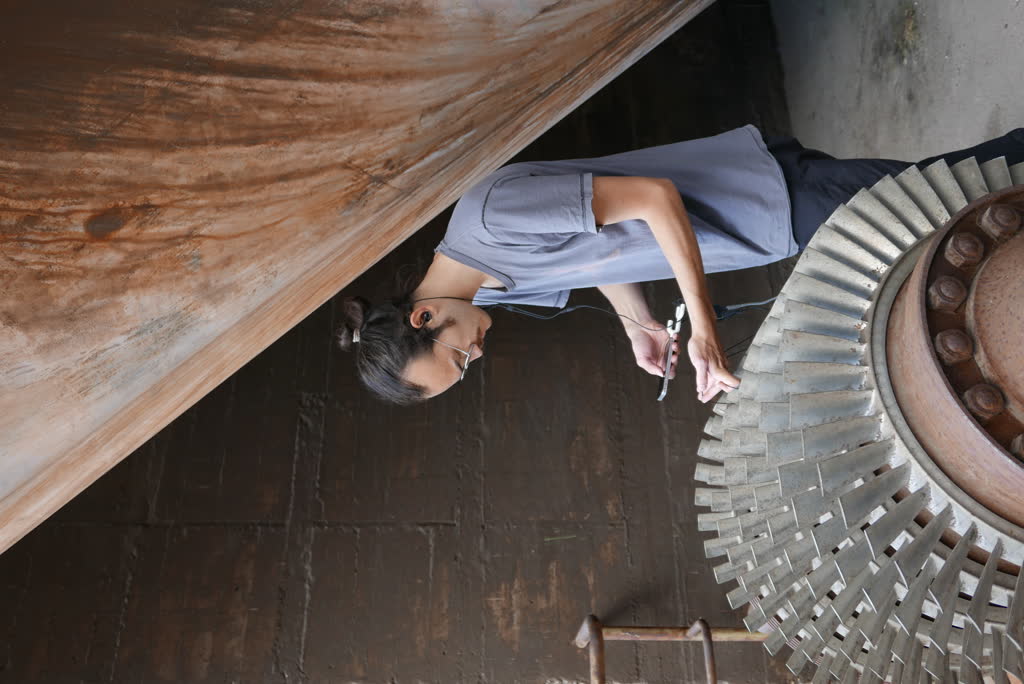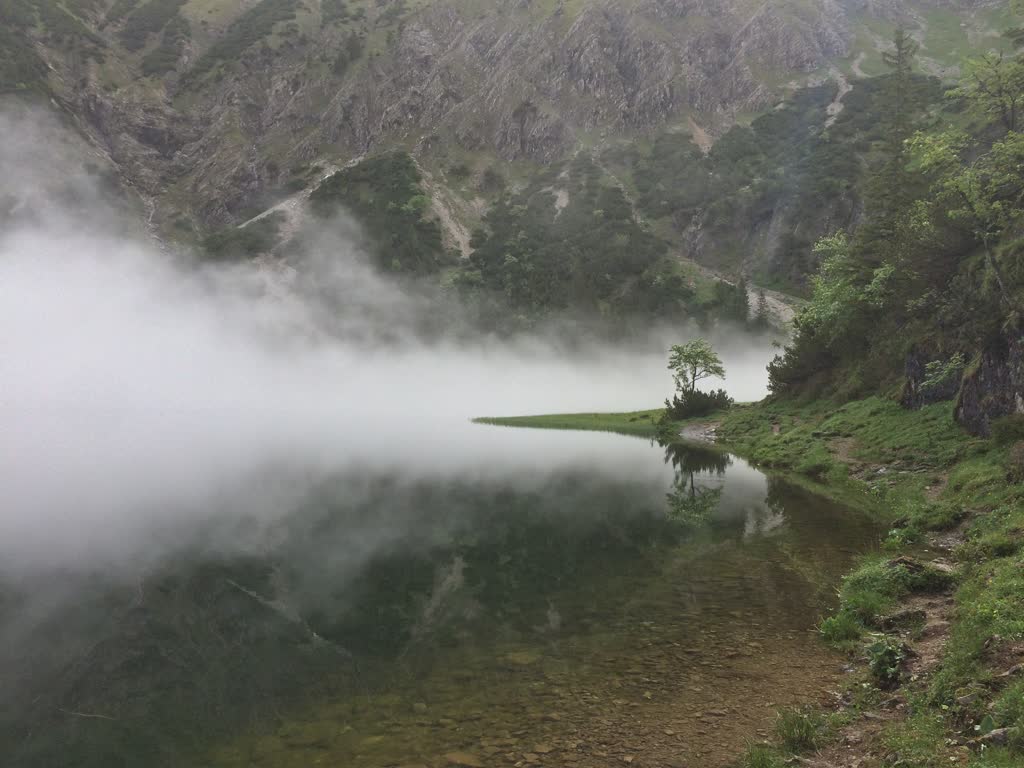KHG T02

Selected recorded improvisations from a sunny morning and afternoon in the Hl. Johannes XXIII church.
situ.am/records
unedited recordings of experiments, real-time, in situ soundscape mediations

Selected recorded improvisations from a sunny morning and afternoon in the Hl. Johannes XXIII church.
testing faust DSP on an inexpensive standalone audio board: A1s Audio Dev Kit
built-in amps for 2x speakers
driver needed to recognize serial device on mac
https://www.diystompboxes.com/smfforum/index.php?topic=123939.msg1177779#msg1177779
Got it to work with following instructions found here and with bash scripts/modifying examples:
https://github.com/HolyCityAudio/ESP32/tree/master/faust
- downloaded, moved faust-build.sh and made executable as instructed, modified with serial port name.
To add potis:
MCP3008 - 8-Channel 10-Bit ADC
P0915N-FC15BR10K - 10K THT + Panel mount pot
SPI default pin mapping:
SPI | MOSI | MISO | CLK | CS
VSPI | GPIO 23 | GPIO 19 | GPIO 18 | GPIO 5
HSPI | GPIO 13 | GPIO 12 | GPIO 14 | GPIO 15
(transcribed from voice memo, 2020-04-27)
record spoken phrase/percusive beats/etc into sample
detect transients by peak/threshold-following
trigger permutations of cut-up sample playback, eg:
abcdefg
gfedcba
abababa
fedfedf
optionally have multiple recordings of same phrase/beats, to add variety to chose from
[todo] get recordings from felix's zoom
- photos from thiago
- photo of marie
short afternoon break to test a delay pedal, two hammocks happened packed, reface cp + moog synth app. echoes of khg plays.
next time: hang mics

on the train over:
- got the improved routing matrix interface working on the train over
- agreed to set felix up with a simple one-page site that creates annotation entries for recordings, editable by anyone (maybe password-protected)
- make appointments in nice places and get ready on the way...
balancing giving and taking in a space, active/passive, listening/sounding. cold and dark, still air, sensory deprivation.

finally found the pipe not looking for it.
testing small compact battery-powered setup: reface cp, marshall ms-2, ma
+
flexible routing into pitch shifters, slow changes
-
hard to see value of loudness in the router
idea:
- [x] changing interface so that holding down pad moves 'set value' to current value
- [ ] expose loop in-out-fade time
^ where the process of experimentation is more interesting than the recording itself, and the experience of the process reveals desire lines and areas for improvement


A serendipitous organ hour at the St. Michaels church in Brüsseler Platz. Standing in the middle of the church, kids play outside, filter through, reverberate. Victor switches the organ on, a low hum, a deep breath fills the space. Soft flutes tumble in, strings and bass sounds smoothly drift into eachother.
Victor invites us upstairs for an organ hour with the Baroque Synthesizer, displaying the voice options assigned to three keyboards, foot pedals, volume pedal, flexible coupling.
for next time:
testing the patch running running simply on iphone using built-in mic. the lightness and lack of cable connections afford an intuitive movement of the integrated mic as dry/wet modulation.
tapeshift~ = pitch -12, window ~100, delay ~100
process = adc~:tapeshift~:dac~


a space in-between, a space on the way. mediating the loud train ride through a macbook microphone and earlier piano sample to test functionality of the patch accidentally re-situates the listening experience as active and real-time.
the presence of everything, nothing shouts importance ... quiet is quieting ... (Gordon Hempten)
in situ slow-evolving conducting/scheduling
first thing in the morning, open up the routing-matrix patch from yesterday, pull in a looped piano recording.
filtered in feedback and filtered again.
route tapeshift~:dac~ 1 10000
X
|
metro 125
|
route sf~:dac~ 1 0; route sf~:dac~ 0 0 10
routing matrix with variable fade-time working
recordings feature prominent low-end ambience from traffic - how to use this? filter it out?
wind through reeds, loud ducks. off-recorder mics make cue-making (almost) silent.
walking soundscape, slowly-changing filters as attention-prompts. elements:
how to work with droning car sounds? trying to reinforce/mask them with sinewave organ.

testing sequencer with pp.grainer~ and KHG organ sample
process=khg-organ.wav:pp.grainer~
[pp.grainer~]<:([tapeshift~].[pan~].[fade~],2)
patch notes: two asynchronous loops, one ma loop
tapeshift~ delay on live input
would be nice: easy control of tapeshift~ volume (at least)
testing chord with rhymthic 1/8 playpos jumping as carpet
listened through through schmalfußs tape-IR. consider feeding through, re-recording?
todo: add playpos-jumping module
past sound as rhythmic pulse
spring between random segments of the loop
every 1/8, jumping 1/8*lengthOfLoop * random(8)
1 mic in room with piano with loops and tapeshift
fix:
todo:
getting back to the launchpad-looper-router-interface, checking that it works as expected after a few days away. testing with a sample
patch notes: sample (taiwan-junglebirds.wav) looped, buffer looped, routed into tape-shift effect with feedback, starting to find something, hit record
todo:
first take of improvising in dialogue with an active figure-ground delayline modulation feedback. the length of a sound-object (distinguished as a ‘figure’) modulates the length of a delayline such that sounds made in a room are fed back to the room at varying–controllable–later times. pitch-shifting artefacts of the moving delayline abound.
with heiwa wong, marie stremmel, david martens

A handheld zoom capturing a waterfalls fed through Microbrute sequenced filter formed the basis for later keyboard overdubs.
